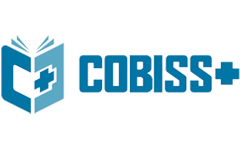Embracing Industry 4.0 - Guidelines for Managers
DOI:
https://doi.org/10.61841/pzeyqg05Keywords:
Fourth Industrial Revolution, modern organizations design, manufacture, deliver and service their productsAbstract
The industry 4.0, or Fourth Industrial Revolution (used interchangeably in this context), as it has been more broadly known, can potentially change the way modern organizations design, manufacture, deliver, and service their products. However, due to the lack of a universal framework for the application of Industry 4.0, businesses find it challenging to become a part of the revolution. Managers primarily encounter difficulties in planning the implementation without any proper guidelines. Hence, the article aims to find an answer to the question, “What factors managers should consider when they apply the fourth industrial revolution?”Towards that end, this research carries out a literature review to obtain primary data from academic articles on the implementation and application of Industry 4.0/the fourth industrial revolution. This study eventually came up with ten factors that should be considered by managers in the application of Industry 4.0, apart from delineating several limitations as well as issues. Implications wise, this study would facilitate practitioners and managers properly.
Downloads
References
1. Castelo-Branco I, Cruz-Jesus F, Oliveira T. Assessing Industry 4.0 readiness in manufacturing: Evidence for the European Union. Computers in Industry. 2019 May 1;107:22-32.
2. Orzes G, Rauch E, Bednar S, Poklemba R. Industry 4.0 Implementation barriers in small and medium-sized enterprises: A focus group study. In 2018 IEEE International Conference on Industrial Engineering and Engineering Management (IEEM) 2018 Dec 16 (pp. 1348-1352). IEEE.
3. Buer SV, Strandhagen JO, Chan FT. The link between Industry 4.0 and lean manufacturing: mapping current research and establishing a research agenda. International Journal of Production Research. 2018 Apr 18;56(8):2924-40.
4. Kamble SS, Gunasekaran A, Gawankar SA. Sustainable Industry 4.0 framework: A systematic literature review identifying the current trends and future perspectives. Process Safety and Environmental Protection. 2018 Jul 1;117:408-25.
5. Sony M, Naik S. Key ingredients for evaluating Industry 4.0 readiness for organizations: a literature review. Benchmarking: An International Journal. 2019 Jan 29.
6. Santos C, Mehrsai A, Barros AC, Araújo M, Ares E. Towards Industry 4.0: an overview of European strategic roadmaps. Procedia Manufacturing. 2017 Jan 1;13:972-9.
7. Lichtblau K, Stich V, Bertenrath R, Blum M, Bleider M, Millack A, Schmitt K, Schmitz E, Schröter M. IMPULS-industrie 4.0-readiness. Impuls-Stiftung des VDMA, Aachen-Köln. 2015.
8. Bonekamp L, Sure M. Consequences of Industry 4.0 on human labour and work organisation. Journal of Business and Media Psychology. 2015;6(1):33-40.
9. Shamim S, Cang S, Yu H, Li Y. Management approaches for Industry 4.0: A human resource management perspective. In 2016 IEEE Congress on Evolutionary Computation (CEC) 2016 Jul 24 (pp. 5309-5316). IEEE.
10. Jiang JR. An improved cyber-physical systems architecture for Industry 4.0 smart factories. Advances in Mechanical Engineering. 2018 Jun;10(6):1687814018784192.
11. Tjahjono B, Esplugues C, Ares E, Pelaez G. What does Industry 4.0 mean to the supply chain?. Procedia Manufacturing. 2017 Jan 1;13:1175-82.
12. Piccarozzi M, Aquilani B, Gatti C. Industry 4.0 in management studies: A systematic literature review. Sustainability. 2018 Oct;10(10):3821.
13. Porter ME, Heppelmann JE. How smart, connected products are transforming competition. Harvard business review. 2014 Nov 1;92(11):64-88.
14. Culot G, Orzes G, and Sartor M. Integration and scale in the context of Industry 4.0: The evolving shapes of manufacturing value chains. IEEE Engineering Management Review. 2019 Feb 20;47(1):45-51.
15. Cai, L. (2011). Product safety and security in the global supply chain. Journal of Operations Management, 29(7/8), 707-720.
16. 16 Li CH, Lau HK. A critical review of product safety in industry 4.0 applications. In 2017 IEEE International Conference on Industrial Engineering and Engineering Management (IEEM) 2017 Dec 10 (pp. 1661-1665). IEEE.
17. Meyer GG, Wortmann JC, Szirbik NB. Production monitoring and control with intelligent products. International Journal of Production Research. 2011 Mar 1;49(5):1303-17.
18. Lee J, Kao HA, Yang S. Service innovation and smart analytics for industry 4.0 and big data environments. Procedia Cirp. 2014 Jan 1;16(1):3-8.
19. Kiel D, Müller JM, Arnold C, Voigt KI. Sustainable industrial value creation: Benefits and challenges of industry 4.0. International Journal of Innovation Management. 2017 Dec 30;21(08):1740015.
20. Kagermann H. Change through digitization—value creation in the age of Industry 4.0. In Management of Permanent Change 2015 (pp. 23-45). Springer Gabler, Wiesbaden.
21. Johansson J, Abrahamsson L. The good work—a Swedish trade union vision in the shadow of lean production. Applied ergonomics. 2009 Jul 1;40(4):775-80.
22. Davies R, Coole T, Smith A. Review of socio-technical considerations to ensure successful implementation of Industry 4.0. Procedia Manufacturing. 2017 Jan 1;11:1288-95.
Downloads
Published
Issue
Section
License
Copyright (c) 2020 AUTHOR

This work is licensed under a Creative Commons Attribution 4.0 International License.
You are free to:
- Share — copy and redistribute the material in any medium or format for any purpose, even commercially.
- Adapt — remix, transform, and build upon the material for any purpose, even commercially.
- The licensor cannot revoke these freedoms as long as you follow the license terms.
Under the following terms:
- Attribution — You must give appropriate credit , provide a link to the license, and indicate if changes were made . You may do so in any reasonable manner, but not in any way that suggests the licensor endorses you or your use.
- No additional restrictions — You may not apply legal terms or technological measures that legally restrict others from doing anything the license permits.
Notices:
You do not have to comply with the license for elements of the material in the public domain or where your use is permitted by an applicable exception or limitation .
No warranties are given. The license may not give you all of the permissions necessary for your intended use. For example, other rights such as publicity, privacy, or moral rights may limit how you use the material.
















